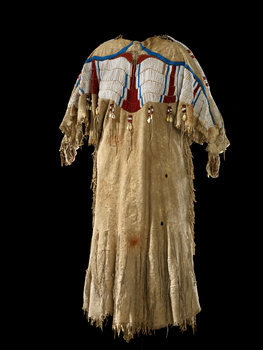Shelly Uhlir, Full-Time Exhibition Mountmaker, Visits SAM

Shelly Uhlir, a full-time exhibition mountmaker since 1989 and senior mountmaker at the Smithsonian Institution’s National Museum of the American Indian since 2001, spoke to SAM staff today about the technical aspects of mountmaking.
A mount (or armature or bracket) is a structure constructed to hold an artifact securely in a specific orientation without drawing attention to itself or damaging the object. A mountmaker, such as Shelly, is responsible for designing the mount in a way that protects and preserves the artifact during its display period. Mounts and mannequins are important to most exhibitions as they offer a variety of display options and subsequently, allow museum-goers to see and interpret works and artifacts in new ways. Without mounts and mannequins, objects would be more easily damaged and less easily viewable. Museums have been using mounts and mannequins since the early 20th century and different advances have been made in recent decades.
One of the points I found intriguing in Shelly’s lecture was her discussion about mannequins’ faces. Many of the pieces, particularly garments, she works with at the National Museum of the American Indian are on loan from Native American people. Loaners can request that no face or body be part of the garments’ display, so Shelly has developed multiple ways of mounting garments that allow for a seamless display of the garment that does not require a bodily form. I had not previously thought about socio-political issues that could stem from using mannequins in order to display attire. One would have to decide on hair texture and color, skin color, and facial features, and all of this would have to be done with intense research and historical accuracy in order to prevent any harmful misrepresentation. When it comes time to make the face, it can be carved or cast. But even if cast, who would have the right face to cast and also be willing to undergo the casting process? Anyway, I though this point was interesting in regard to Shelly’s work as a mannequin and mount-maker because it highlights the technicalities of visual representation and exhibition design in the museum setting. Shelly’s lecture was engaging and gave me a new way to experience museums. If you get the chance to hear her speak or meet her, definitely do so.